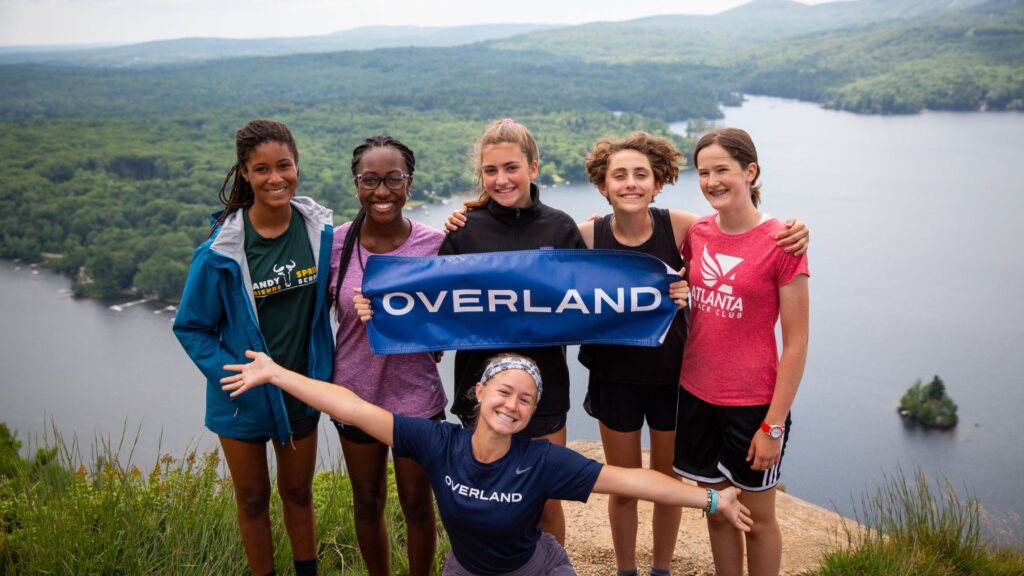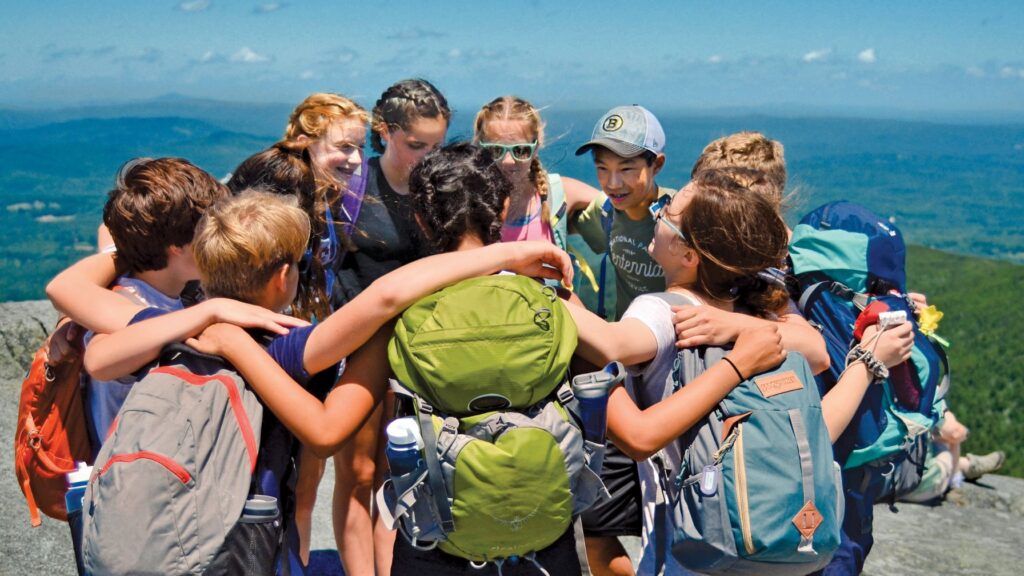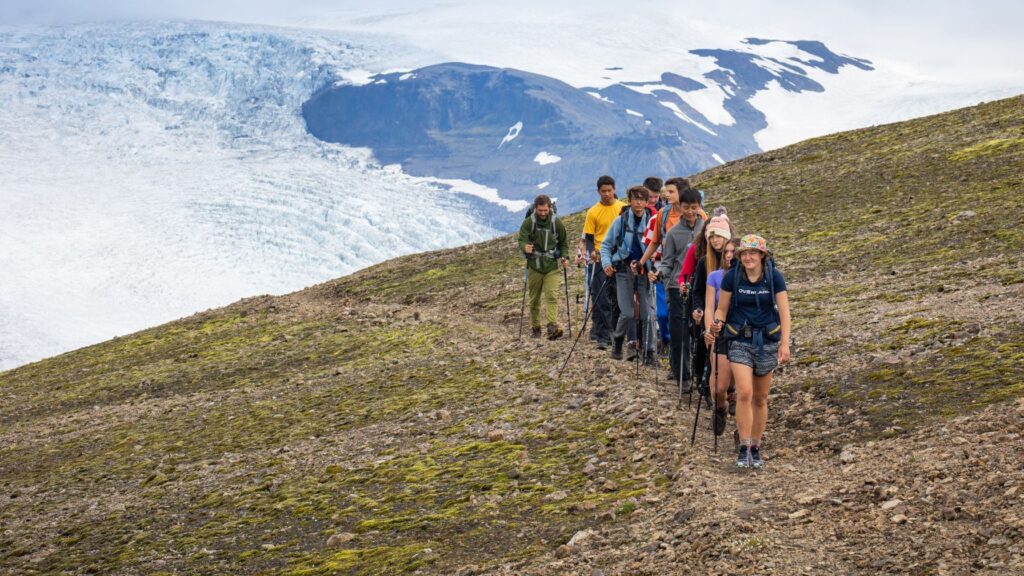Here at Overland, we find that the only thing that beats the excitement of sharing a summer hiking adventure with kids and teens is pulling out a map and planning the next one!
Looking for tips on how to plan a teen adventure trip in the Swiss Alps? With its snow-capped peaks, charming villages, and excellent public transportation, Overland groups have been discovering the magic of Switzerland for over thirty years. Read on for tips to help you plan your own hiking trip in the Alps!
What is best time to hike the Swiss Alps?
The best hiking season in Switzerland runs from mid June to mid September. This period offers lots of sunshine and comfortable temperatures for hiking, while ensuring that the majority of high mountain hiking paths will be free of snow.
If you already have summer plans, the four weeks from mid-September to mid-October offer cooler days and less crowded trails. In the spring, there are cool days with plenty of sunshine, and lots of flowers, but trails are generally wetter (and some passes are still closed). If you enjoy leisurely valley walks this could be the right time for you.
As is often the case in mountain environments, weather in the Swiss Alps can change quickly, so it’s important to be well prepared with proper footwear and great clothing. Overland’s seasoned trip leaders have been refining our packing list for our teen adventure trips like the Alpine Challenge for decades, and have found that high quality rain-gear, combined with several insulating layers (non-cotton), are key to staying warm and cozy in any weather condition.
How To Choose A Summer Adventure For Your Child
Get first-hand insights into what you should look for when choosing the next summer travel adventure for your child.
What are the best airports in Switzerland for hiking the Alps?
Here are the airports we have used during our decades of running summer adventure camps in Switzerland:
- Zurich (ZRH), the launching point for our Alpine Challenge and Alpine Explorer trips, is Switzerland’s busiest airport, and it has lots of good options for flights (and, oftentimes, the best pricing).
- Geneva (GVA), starting point for our Language and Hiking France program, is smaller than Zurich, but has plenty of good options, and for some itineraries it has attractive pricing.
Both airports serve as excellent gateways to the Alps and offer regular, direct flight connections to North America. Curious about what it’s like flying abroad? Read here about our nearly forty years of international flying experience: Overland’s Best Advice For Flying Internationally.
Should you rent a car in Switzerland?
No. Rental cars are not necessary in Switzerland. The Swiss Federal Railway (known as the SBB), boasts one of the most magnificent (and punctual) public transit systems in the world, offering a large network of trains, cog-railways, trams, busses and ferries that will carry you through mountains, beside glaciers, and across sparkling lakes.
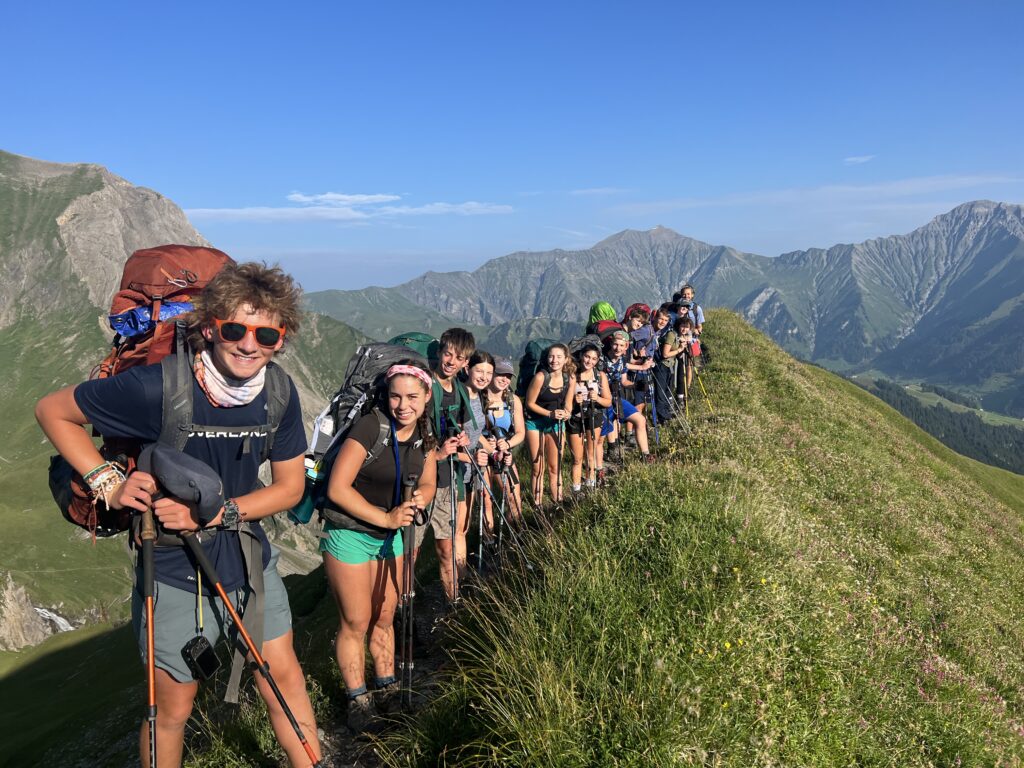
“Being in the Swiss Alps in summer is truly magical and feels a bit like time-travel: walking between quaint old villages, with chalets dating back to the 12th century, and through farmer’s fields that are still hayed by hand, really allowed me to feel like I was in a whole different world and time”
Are Swiss train passes a good value?
Yes! With an SBB Swiss Travel Pass, you can enjoy unlimited access to all public transportation for the duration of your trip. Luke Costley on Overland’s admissions team is convinced that traveling by train is a big part of the adventure. “Being in the Swiss Alps in summer is truly magical and feels a bit like time-travel: our family always opted to travel by train instead of renting a car, and I learned to love the sights and sounds and peculiarities of train trips from town to town. That, plus walking between quaint old villages, with chalets dating back to the 12th century, and through farmer’s fields that are still hayed by hand, really allowed me to feel like I was in a whole different world and time,” says Luke.
Find your perfect hiking destination (and two of our favorites!)
With Swiss Travel Passes in hand, it’s time to let the hiking begin. Let’s start with the two best-known Swiss mountain towns:
Grindelwald
In the heart of the Bernese Oberland, and at the base of the North Face of the Eiger, for many people, Grindelwald is a must-see. That, of course, means it’s crowded — and not just in town, but on many of the trails that lead out of town. Our advice? If you must see Grindelwald, go as late in the season as you can– September would be best.
Zermatt
There’s no mountain town like Zermatt anywhere in the world: yes, it’s jam-packed with tourists, but with the iconic Matterhorn looming over town, it’s hard to say no to a short visit. So just as with Grindelwald, head there at the end of the season.
These are two of our favorite Swiss towns: Gstaad and Stechelberg
Overland’s co-founders Tom and Liz Costley first visited Switzerland in 1986 to scout an Overland trip, and they have returned with family and friends nearly every summer since. Their go-to destinations?
- The mountain town of Gstaad, in the Bernese Oberland. It’s surrounded by a host of small villages which offer endless hiking and walking opportunities for all ability levels.
- Stechelberg. There’s a (very) small town here, but the hiking is great (and the crowds stay down the valley in Lauterbrunnen).
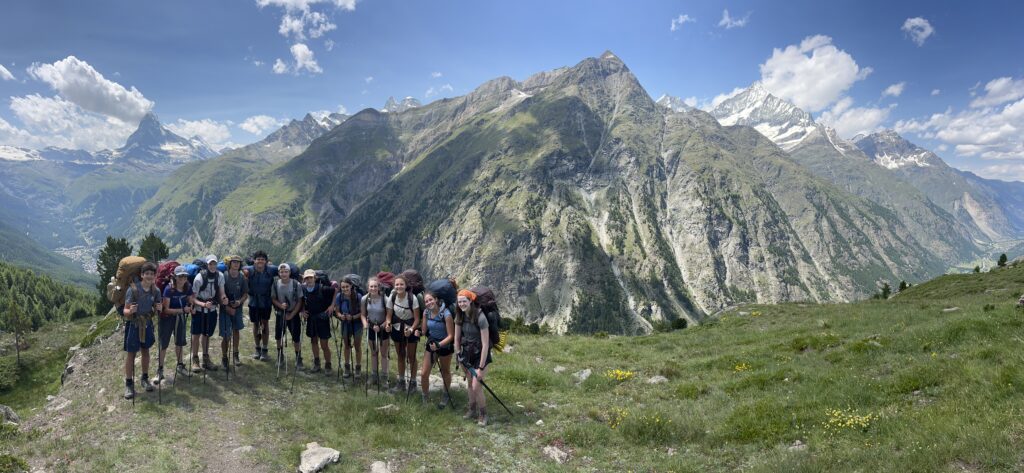
What is a typical hike like in the Swiss Alps?
One of Tom’s regular hikes in Gstaad begins in Lauenen, just outside of the village of Gstaad. “The Geltenhütte hike from Lauenen might be my favorite hike in the world. I love the terrain: the lake at Lauenensee, the waterfalls just beyond, and the big meadow filled with wildflowers below the rock cliffs. There’s easy access, a well-maintained trail, and an ideal picnic spot at the Geltenhütte where you can bring your own lunch or buy a hot lunch from the hut’s kitchen.”
Wherever you hike in the Swiss Alps make sure you have a good map!
While Grindelwald and Zermatt are good launching points for hikes, picnics, and dips in an alpine lake, we always argue that the magic of Switzerland really starts once the valleys get deeper and the towns get smaller — and that’s why we love Gstaad and Stechelberg. With the Switzerland Mobility app, you’ll have free access to color coded topographical maps which will guide you on the meticulously maintained network of walking paths (yellow), hiking trails (red), and high-alpine routes (blue—experts only). The map even syncs with the train schedule, making getting to the trailhead a breeze. If you’re old school, and love the feel of a paper map in your hands, every Swiss mountain town has excellent maps for sale.
Consider hiring a guide
If you’re new to hiking, or looking for an expert to help you push your limits in more challenging terrain, we recommend hiring a Bergführer, or mountain guide. Just be sure to look for the International Federation of Mountain Guides Associations (IFMGA) seal to ensure that the guide has the highest certification of international mountain guiding. You’ll find a list of local guides in each tourism office in Switzerland, and the staff there will be happy to help connect you with a well-qualified mountain guide who can craft the perfect adventure based on your group’s ability level.
The simple joys of Swiss mountain hut life
Hearty food is essential during a big adventure, and thankfully Swiss menus are filled with tasty local treats. (Here’s what meals look like while on Overland.) With a mountain farming tradition deeply intertwined with its culture, Switzerland is renowned for its local cheese and dairy, hearty baked breads, cured meats and sausage, and fresh local produce.
Best of all, you can enjoy fine local cuisine while high in the mountains! Hundreds of mountain huts dot the Swiss Alps, offering lodging and meals to walkers, hikers, and mountaineers. Stays there are a regular highlight for Overlanders on the Alpine Challenge and Alpine Explorer.
Our top three meal spots in the Swiss Alps
- Mid-morning coffee and strudel at Obersteinberg while hiking to the tiny lake at Oberhornsee.
- Lunch at the Geltenhütte high above Lauenen. This is Tom’s favorite: “I love the camaraderie of the hut as everyone sits outside in the sun and feasts on a well-deserved lunch of Rösti (Swiss hash browns, topped with mountain cheese and a fried egg) and a warm slice of Apfelstrudel!”
- Dinner at the Bluemlisalp Hut. Overland groups have loved this hut for three decades: the view is well-earned (the hike from Kandersteg is not for the faint-hearted!) and the hut is superbly well-run.
A summer hiking trip in the Alps with kids and teens is the perfect way to combine charming mountain villages, stunning hiking paths, and tasty Swiss cuisine. We know there’s a lot to consider when planning a trip, so if you’d rather leave the details to us, have a look at some of our most popular hiking adventures!
Want to know more about Overland Summers?
Overland Summers is a American Camp Association accredited summer camp based in Williamstown, Massachusetts. With a year round team of twenty camp professionals, a summer staff of over two hundred trip leaders, and an enrollment of two thousand campers, Overland is the leader in teen adventure trips.
Add your favorite Overland hiking memory in the comments below or reach out directly to Trip Planner Dave McCahill ([email protected]) for more tips on how to plan a summer hiking trip in the Alps!




